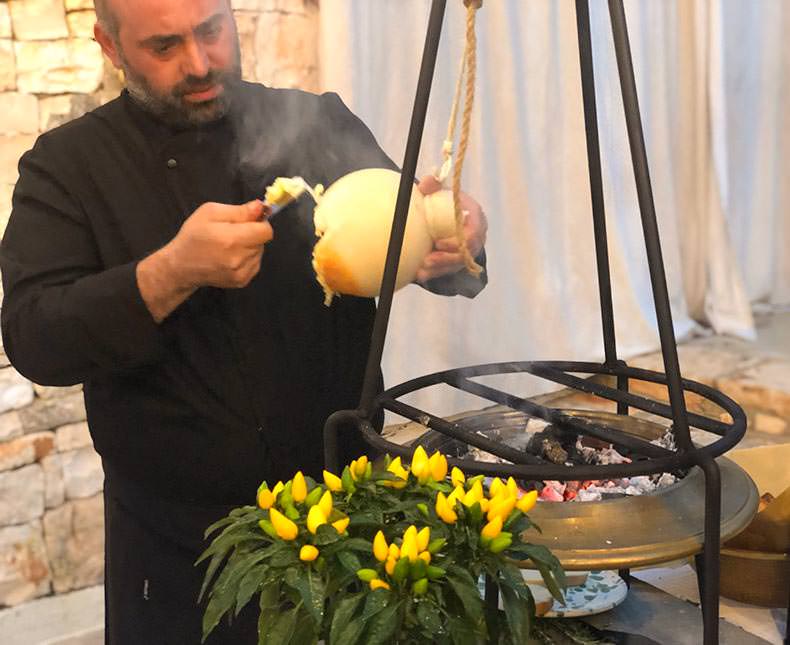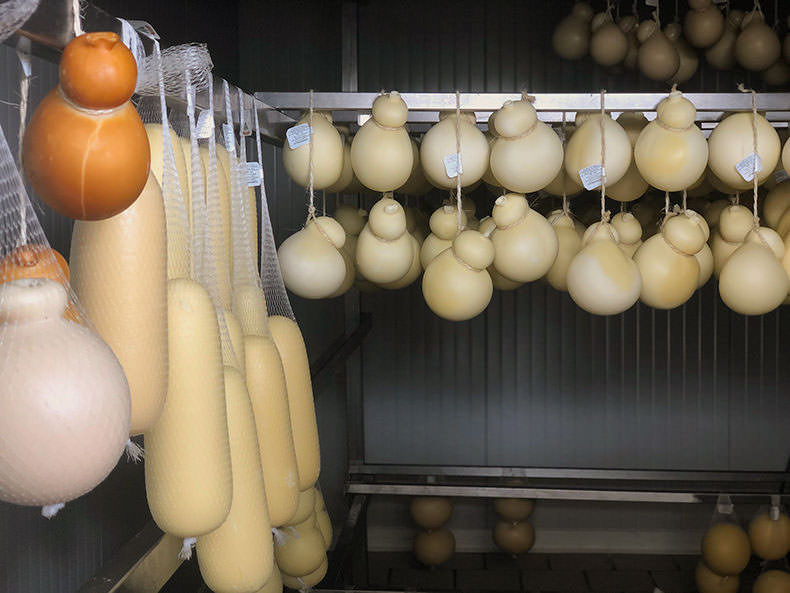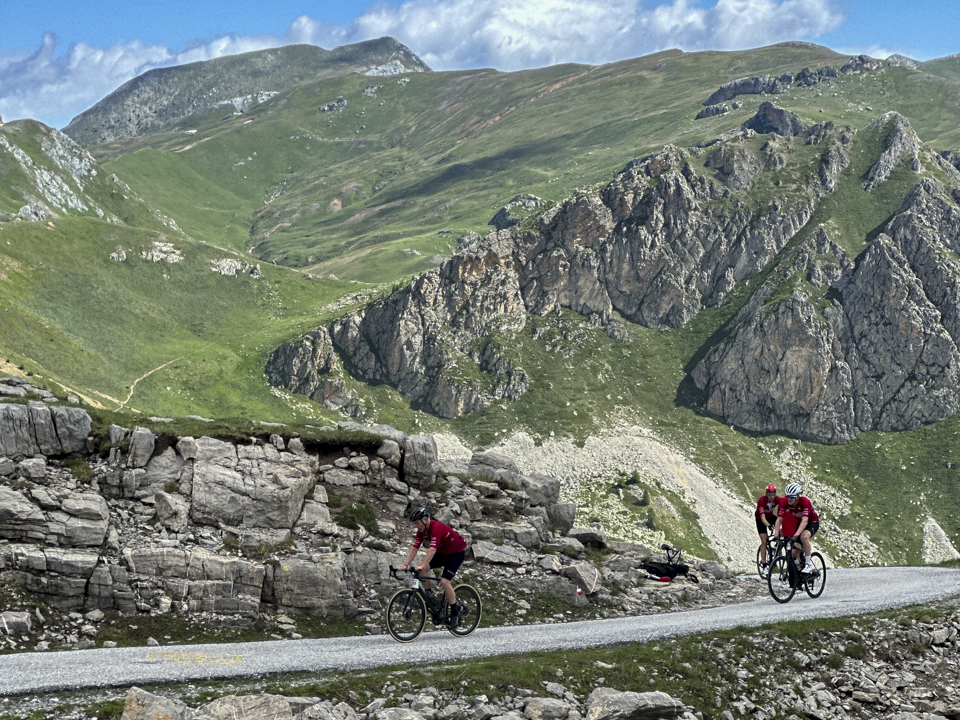We often think about what makes Puglia different, and what it is that has made the region become an Italian travel hot spot over recent years. Certainly, our Puglia Cycling Tour has become one of our most popular tours on our calendar, so delving beneath the surface of this great region and others we traverse, is a big part of our passion and what we love to share.
One thing is for sure, Puglia is very different to other Southern Italian regions. Like every region in Italy, it has its own distinct personality and style, with la cucina povera definitely being one of its defining characteristics.
As a region, Puglia has remained absolutely connected to its agricultural roots. Over the past 20 years, it has been able to ‘wake up’ from its sleepy past; a region that traditionally was known as poor man’s Italy and ignored to now one that is increasingly admired and travelled. However, this shift didn’t happen overnight, it is the result of a grassroots movement of locals over many years who believed in their land and came to understand its value, ensuring they could capture a share of the tourism that Italy enjoys….and we’re happy to be a part of it, sharing it with our guests.
The people, land and produce
The beauty of Puglia’s people and culture is their warm and welcoming attitude, and their connection to their land and agricultural roots. A simple life is enjoyed, with this quote from a farmer we spoke to on our Tour of Puglia last year saying it all: “I just empty my mind and live.” In an era of advancement, the mindset to live and be content with what we have, remains strong; living in nature, farm to table eating…it’s all just part of life in Puglia.
Puglia is a rugged, agricultural land and Italy’s flattest and driest region. Its sweeping plains, surrounded by Mediterranean coastline on 3 sides, are bathed in sunshine almost all year round. However, they say in Puglia that it is a ‘kind sun’; a sun that nurtures produce with intense flavour; olives, fruits, vegetables, legumes and wheat are the largest crops, and are reflected in the diet, and of course seafood, is plentiful. Puglia’s deep history of farming and fishing is what gives rise to the quality of its ingredients and ultimately its cuisine, which is often described as simple and fuss free.
Here we share Puglia’s abundant ingredients and some traditional dishes from the cuisine.
Olive Oil
Puglia is Italy’s greatest producer of olive oil, with 40% or around 300,000 tonnes of all Italian olive oil produced here each year. There are around 60 million olive trees, and the landscape from Bari to Lecce is dominated by olive groves, producing olive oil that is some of the purest and most flavoursome oil you will taste in Italy (some of our Tuscan friends debate this, but more on that later). Some of the trees, known as monumental trees, are aged between 2000 and 3000 years, and while old and contorted, are majestic. On tour, it’s always a highlight visiting a family mill to see and touch these old trees, and enjoy olive oil tastings.
Vino
Puglia produces more wine than any other region in Italy, with its wines now celebrated for their quality. Eighty percent of the production is from the red grape varieties, Primitivo and Negroamaro, enjoyed in Puglia for over 2000 years, however there is a strong movement now towards rediscovering varieties that have been a part of Puglia’s history for many years. For more on the Wines of Puglia, you can read our blog.
Fruits, Vegetables and Legumes
They say when foods have great taste and personality, it’s all about their natural chemistry and upbringing, with Puglia’s soils definitely blessed. Put simply, Puglia is one large, aromatic fruit and vegetable garden.
Radiant fruits and vegetables with intense flavour are produced here; citrus, tomatoes, artichokes, fava beans, chickpeas, arugula, zucchini, beans, fennel, peppers, onions, and table grapes are all produced in abundance and show up on plates in unexpected ways, which we love; such as the interesting salad consisting of anchovies, olive oil, pepper and orange slices. Buonissimo.
As we ride around Puglia in the summer months, there is nothing better than stopping mid ride to pick fresh figs from the trees, or to make our way down to breakfast each day to find locally grown prickly pears cut up and ready to eat, when in season.
Cheese
Puglia is sheep territory and there are a range of amazing sheep cheeses produced here including the Fallone di Gravina, a very delicate and fresh cheese and Canestrato, another typical cheese of Foggia and Bari, awarded DOP recognition since 1996, which is usually grated on top of meals when a little more aged, or eaten fresh with broad beans or pears.
However, many of the more popular cheeses of Puglia that are used in recipes we are more familiar with, are made from cow’s milk and these include:
Caciocavallo; a typical cheese of Gargano, in the North of Puglia, made from the milk of cows of the Podolica breed. We love our night on tour where we enjoy this cheese prepared in a traditional way over coals, and then smeared over bread.
Mozzarella; widely used in cooking, but also a beautiful delicate cheese enjoyed fresh with tomatoes, Extra Virgin Olive Oil and basil, or on an antipasto plate.
Burrata; one of the most popular and renowned fresh cheeses of Puglia, burrata is made from an outer shell of mozzarella, while the inside contains stracciatella, a combination of both shredded mozzarella and cream, which is only revealed once the burrata is cut open.
Cacioricotta; rich in taste and flavour, this is the Pugliese way to the famous Ricotta. It can be eaten fresh with antipasto, or when a little aged, grated and added to fresh tomato sauce and pasta.
This month on our virtual tour of Puglia, we have been tasting cheese from That’s Amore Cheese in Melbourne, which have been sensational. Their retail store is well worth a visit, for the cannoli alone!
Bread
Durum wheat is a major crop in Puglia so some amazing breads are made here, with Italy’s (and in fact Europe’s) only DOP bread found in Altamura, near the border of neighbouring Basilicata. Often referred to as ‘the best bread in the world’, the tradition of Pane di Altamura is so ancient, it dates back to 37 a.C. Because of its protected status, Altamura bread can only be made with the durum wheat flour grown here, with an original recipe that is handed down through each generation. Baked on wooden boards in wood and stone ovens, the bread has a compact and crispy crust, while being soft in the middle. It is simply delicious.
La Cucina Pugliese
While la cucina povera is in mode for travellers seeking a simple, authentic food and travel experience, the Pugliese have been living this way for centuries and it is something they are proud of; a style of frugal peasant cooking that makes do with what’s at hand, and in season – and without ‘expensive’ items such as meat, salt, butter, eggs and cheese. In fact, the three basic elements to the cuisine are durum wheat, vegetables and olive oil, which are then combined with fish (mostly) and meat (less so) to create traditional dishes, full of flavour.
While it’s not easy to sum up the simplicity and flavour of Puglia’s varied cuisine, the Slow Food movement is certainly alive and well here, as is the Mediterranean diet. It is quite simply, simple and delicious, and relies on fresh local produce.
Orecchiette
The gastronomic symbol of the Puglia region is orecchiette; little ears produced by hand from hard durum wheat (also known as semolina) and water. Eggs were a luxury, so la cucina povera of Puglia uses an eggless, but easily handmade pasta.
Orecchiette are most often paired with slow cooked vegetable sauces such as con cime di rape (a bitter broccoli-like vegetable) or con pomodorini, aglio and ricotta cheese, always drizzled in regional olive oil.
We love meandering the cobblestoned streets of the centro storico of Bari to find nonna’s and their families hand making orecchiette outside their doors, and on the streets. It’s a daily tradition in Bari that is still very much alive and well.
Fave e Cicoria
Braised vegetables with garlic-y fava bean puree. On evenings when we are experiencing some more traditional foods on tour, we always ensure guests try this very typical dish, Fave e Cicoria; fava beans and potatoes are boiled together, then are whipped with olive oil and served with bitter greens. It is absolutely delicious and a staple on most shared antipasto menus.
Fish all ways
The Puglia region, with its 800 km of coastline and two seas, offers a great variety of fish dishes as part of its cuisine; whether served raw or marinated as part of a simple alfresco lunch including octopus or anchovies, or poached in delicious fish soups and stews, combined with rice and pasta, seafood is a big part of the cuisine in Puglia. Fresh and most often caught daily all across the region, it is a delight to eat seafood in Puglia.
Dolce
Dolce or sweets are usually almond based, and are often laced with fragrant local honey and candied fruit.
One of the most famous sweet bits of goodness you find in Puglia, from breakfast to dessert are Pasticiotto; looking a little like a friand in shape, this small cake with a flaky crust reveals its surprise once bitten; a creamy custard filling that is quite simply delicious and often complimented by chocolate. Amazing for a mid ride snack or in the piazza’s of Lecce with a Caffe Leccese.
Aperitivo and ‘Street Food’
As you might know, aperitivo is one of our favourite parts of the day in Italy, and this hour of simple pleasure is taken to another level in Puglia, with a few of our favourites.
Taralli
Taralli (or tarallini) are small unleavened bread rings that are so moreish, you can find yourself eating a whole bowl with a glass of wine at aperitivo or as a snack; they fit perfectly into the back pocket of your jersey too. Traditionally made with flour, wine and olive oil, they are added to with a range of different flavours including fennel seeds, rosemary, sea salt, and chilli pepper flakes. Our favourite is a close call between fennel seeds and rosemary.
Panzerotti
Panzerotti are golden, deep fried pockets of goodness. When eaten hot, you definitely won’t be able to stop at one or two. Traditionally made with left over dough from bread making and filled with the most common ingredients found in a Pugliese home, mozzarella, oregano and a little tomato passata, they can also be found filled with a range of ingredients including ricotta, spinach, anchovies, prosciutto and/or vegetables. The classic recipe is our favourite.
Puccia
Puccia is a traditional flatbread from the Salento region of Puglia that is baked in stone wood-fired ovens and is often stuffed with cheese, tuna, capocollo, capers, anchovies, mozzarella and tomatoes to name a few ingredients. They are the perfect snack and superb at lunchtime.
If La Cucina Povera of Puglia has tantalised your taste buds and you’re interested in finding out more about our Puglia Cycling Tour, you can visit our tour page and enjoy many of the blogs written about the region, or of course contact us anytime.



















